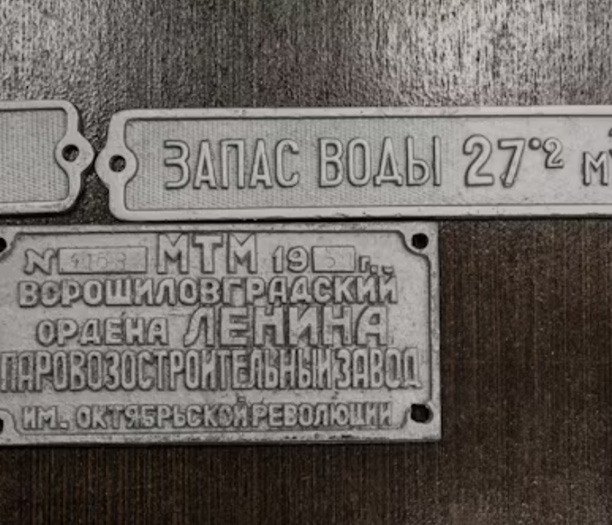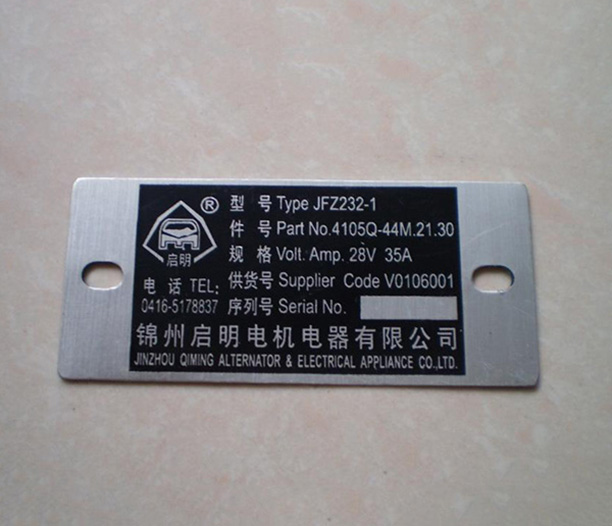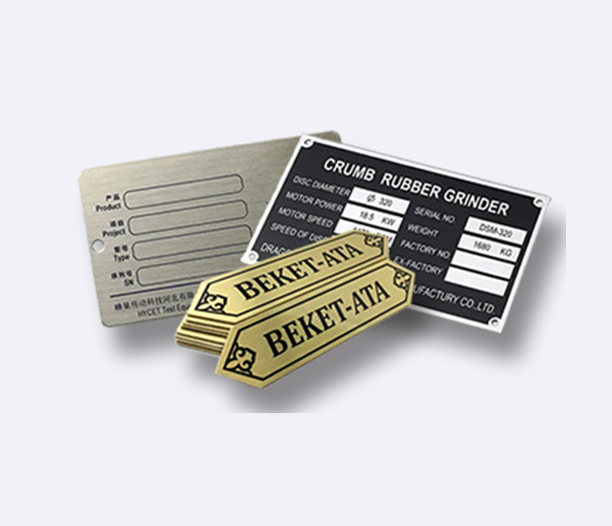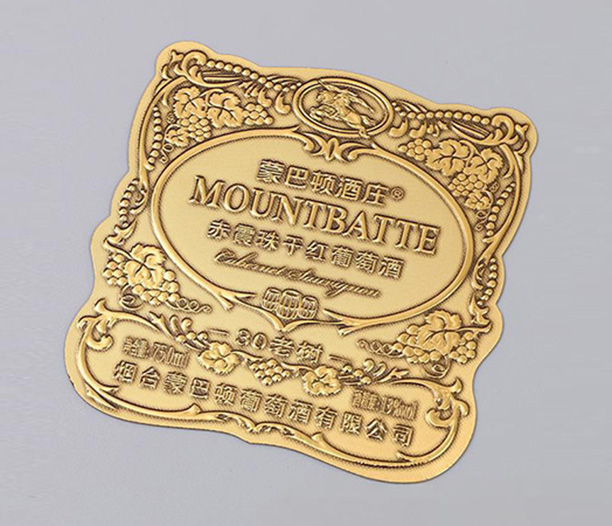If you’ve ever wondered why metal nameplates are the go-to choice for industries ranging from aerospace to consumer goods, durability is a big part of the answer. But how long do metal nameplates actually last compared to plastic, wood, vinyl, or ceramic alternatives? Let’s break it down in plain English, using real-world examples and data to help you make informed decisions for your projects.
1. Metal Nameplates: The Gold Standard for Longevity
When it comes to lifespan, metal nameplates are in a league of their own. Made from materials like stainless steel, aluminum, or brass, these nameplates are built to withstand harsh environments. Think industrial machinery exposed to chemicals, outdoor signage battling rain and UV rays, or even high-traffic consumer products like appliances.
Key Advantages:
- Weather Resistance: Metal nameplates don’t warp, crack, or fade easily. Aluminum, for example, naturally forms a protective oxide layer, making it rust-resistant. Stainless steel takes it further with chromium to fight corrosion.
- Temperature Tolerance: Whether it’s freezing cold or scorching heat, metal holds up. Plastic? Not so much.
- Physical Durability: Scratches, abrasions, and impacts? Metal nameplates laugh them off.
Lifespan: With proper installation and minimal maintenance, metal nameplates can last 20–50+ years, depending on the environment. For context, the Statue of Liberty’s original copper nameplates (installed in 1886) are still readable today—talk about a flex!

2. Plastic Nameplates: Affordable but Short-Lived
Plastic nameplates are popular for their low cost and lightweight design. However, they’re the "disposable option" in the durability race.
Common Issues:
- UV Degradation: Leave a plastic nameplate in the sun, and it’ll fade or become brittle within 2–5 years. Ever seen a faded parking lot sign? That’s plastic at work.
- Chemical Sensitivity: Harsh cleaners or industrial solvents can melt or discolor plastic.
- Physical Weakness: Thin plastic cracks under pressure or extreme temperatures.
Lifespan: In mild indoor environments, plastic might last 5–10 years. Outdoors? Expect replacement every 3–7 years. While cheaper upfront, frequent swaps add up over time—something metal nameplates avoid.
3. Wooden Nameplates: Rustic Charm, Limited Endurance
Wooden nameplates add a classic, organic vibe—perfect for boutique hotels or artisanal products. But Mother Nature isn’t kind to untreated wood.
Downsides:
- Rot and Insects: Moisture leads to rot; termites and beetles see wood as a buffet.
- Weathering: Sun and rain cause warping, splitting, and fading. A wooden nameplate in rainy Seattle might only last 1–3 years without heavy sealing.
- Maintenance Hassle: Oiling, staining, or varnishing is required annually.
Lifespan: With constant upkeep, wood can stretch to 5–8 years. But let’s be real: most people don’t want to baby a nameplate. Metal nameplates? Install once and forget.
4. Vinyl Decals: The Quick Fix That Fizzles Fast
Vinyl stickers are the fast-food solution of labeling—easy to apply but not built to last. They’re common for temporary promotions or low-budget projects.
Why They Fail:
- Peeling and Cracking: Adhesive weakens over time, especially in humid or hot conditions.
- Color Fade: UV rays bleach vinyl graphics within 1–3 years.
- Limited Use Cases: Vinyl can’t handle abrasion or chemical exposure.
Lifespan: Indoors, vinyl might cling on for 2–4 years. Outdoors? Maybe 6–18 months. For permanent branding, metal nameplates are the smarter investment.
5. Ceramic Nameplates: Tough but Brittle
Ceramic nameplates (often used in labs or high-heat settings) offer heat resistance and a sleek look. But they come with a catch.
Drawbacks:
- Brittleness: Drop a ceramic nameplate, and it’s game over. Metal nameplates? A dent at worst.
- Complex Production: Custom designs are pricey and time-consuming.
- Limited Flexibility: Ceramic can’t bend or adapt to curved surfaces.
Lifespan: In controlled environments, ceramic lasts 10–20 years. But one accident = replacement. Metal offers similar longevity plus resilience.
Why Metal Nameplates Outperform Every Time
Let’s cut to the chase: metal nameplates are the MVP for longevity. Here’s why industries swear by them:
- Zero Maintenance: No need for resealing, repainting, or UV coatings.
- Cost-Effective Long-Term: Higher upfront cost, but replacements are rare.
- Brand Integrity: Faded or cracked labels scream "cheap." Metal keeps your branding sharp for decades.
Still not convinced? Check this out: Boeing uses stainless steel nameplates on aircraft engines because they survive extreme pressure, temperature swings, and fuel exposure. Your project might not need jet-engine-level durability, but why settle for less?

Real-World Applications: Where Metal Nameplates Shine
- Outdoor Machinery: Construction equipment, marine vessels, and agricultural tools.
- Medical Devices: Autoclavable stainless steel nameplates handle sterilization.
- Architectural Signage: Building directories or memorial plaques that last generations.
Even tech giants like Apple use precision-etched aluminum nameplates on devices—because premium products deserve premium labeling.
The Bottom Line
If you’re tired of replacing flimsy labels or want a "set it and forget it" solution, metal nameplates are the undisputed champion. They outlive plastic by decades, laugh off weather that destroys wood, and stay intact where vinyl peels. Sure, alternatives work for short-term needs, but for lasting value? Go metal.
Next time you see a faded plastic sign or a warped wooden plaque, remember: that’s the cost of cutting corners. Invest in metal nameplates once, and your grandkids might still be reading them.






